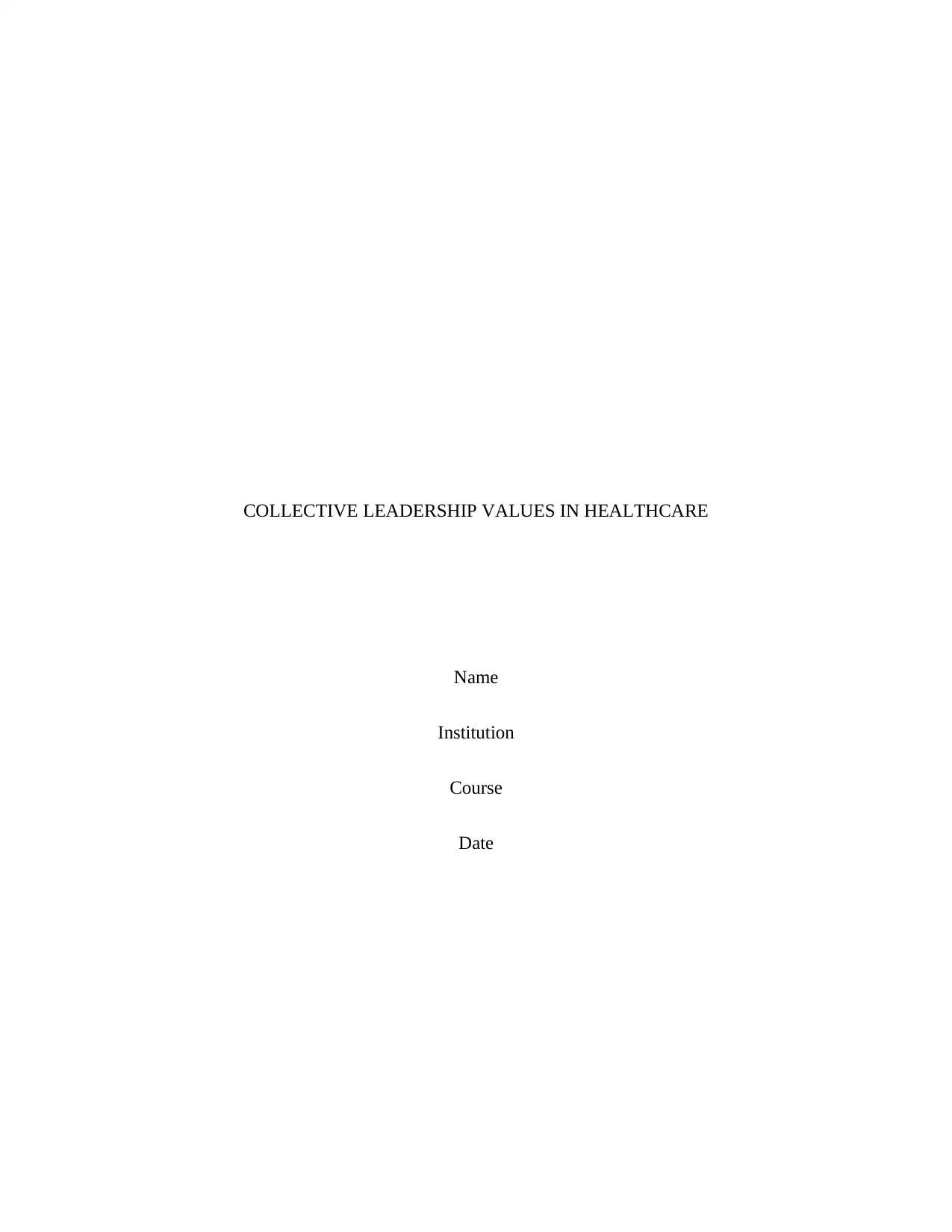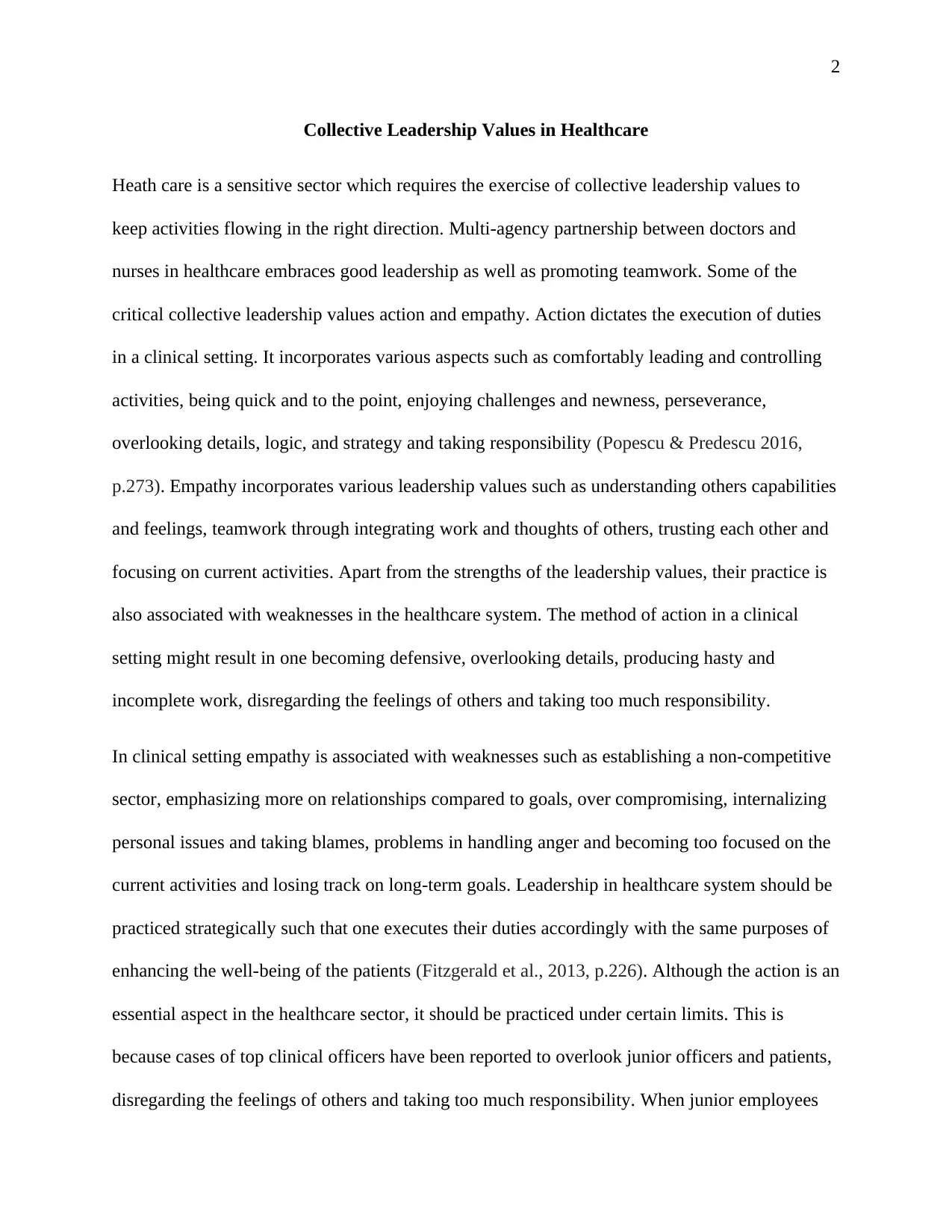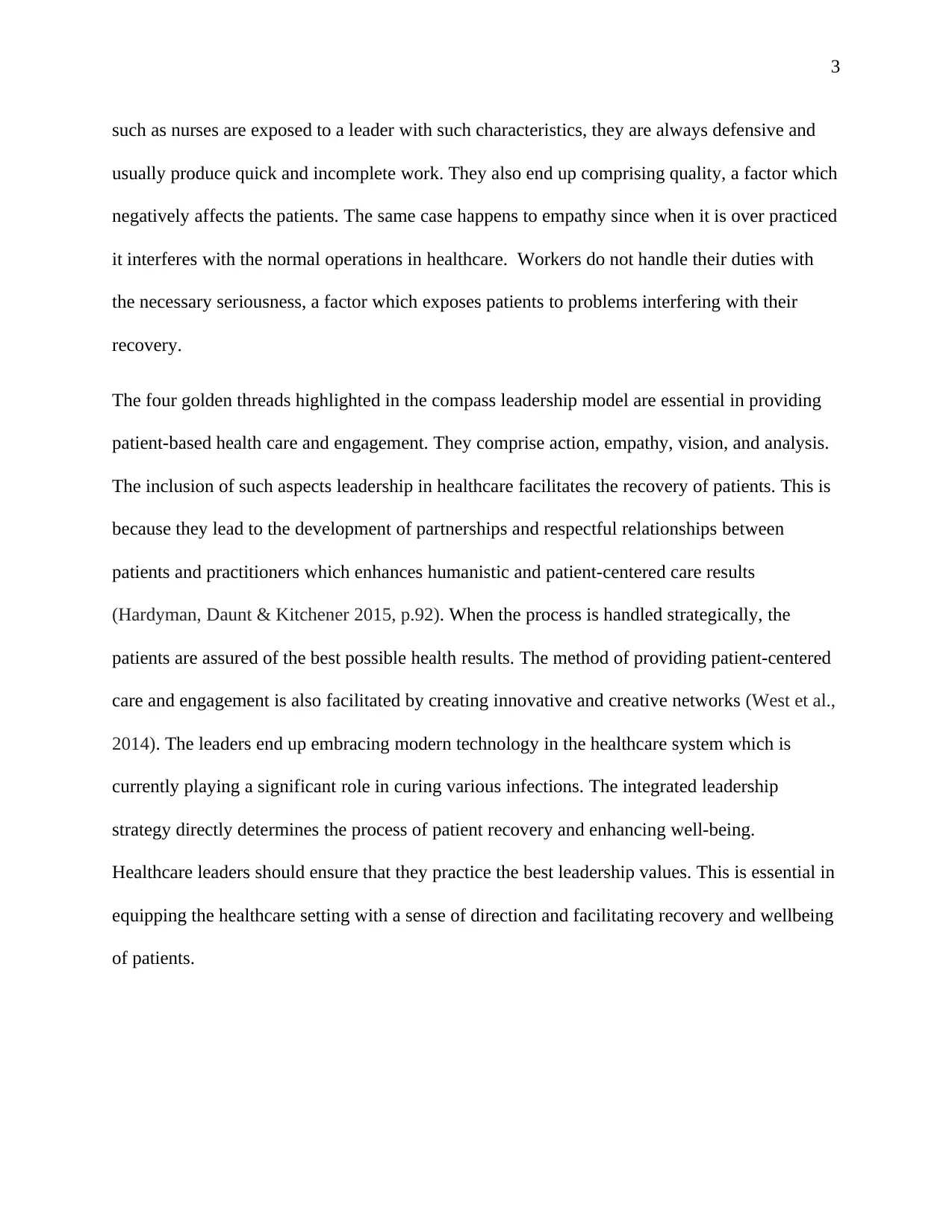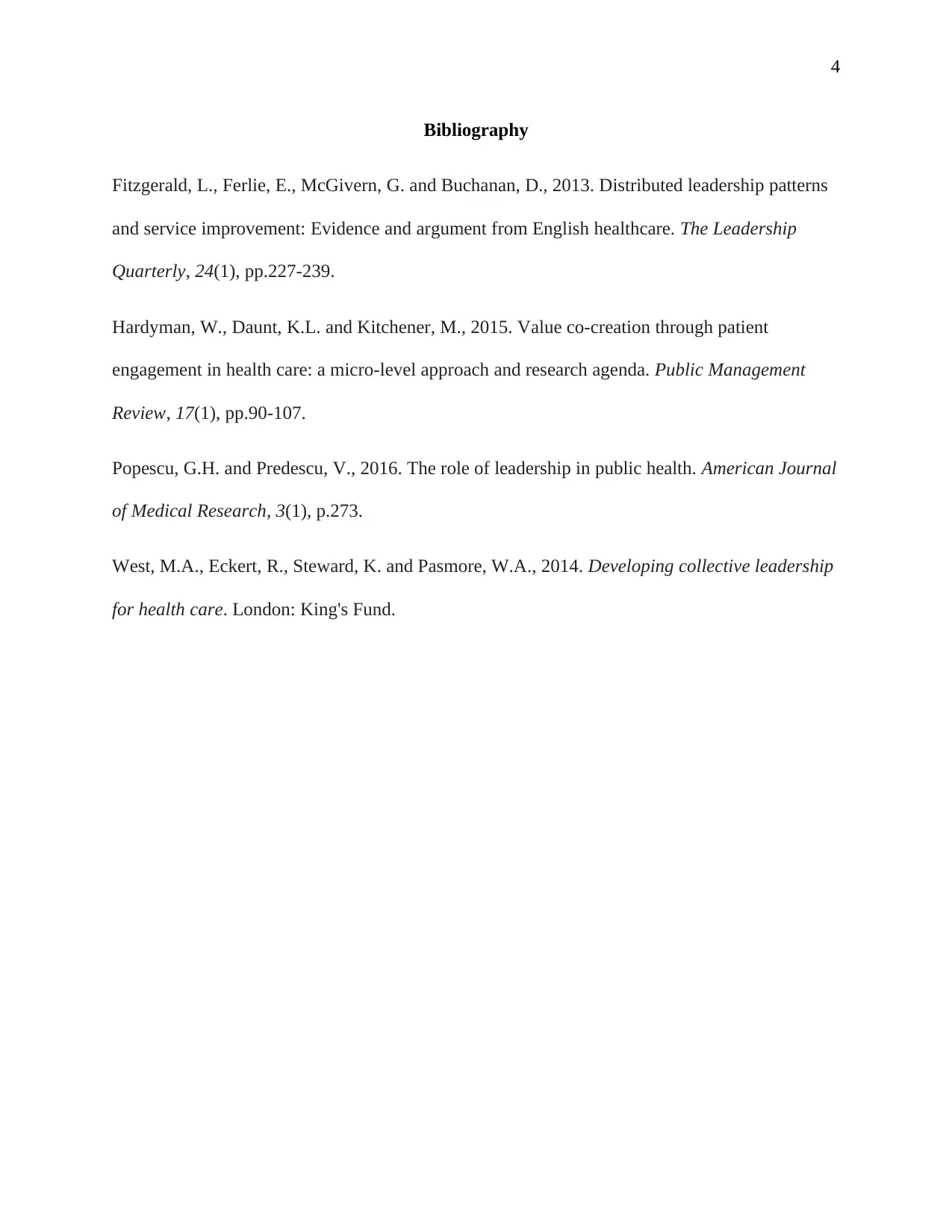Analysis of Collective Leadership Values in the Healthcare Sector
VerifiedAdded on 2023/04/20
|5
|788
|202
Report
AI Summary
This report delves into the crucial role of collective leadership values in the healthcare sector. It examines the importance of action and empathy as key leadership qualities, highlighting their strengths and weaknesses within a clinical setting. The report explores the impact of these values on patient care, emphasizing the need for strategic implementation to enhance patient well-being. It further discusses the 'compass leadership model' and its four golden threads, including vision and analysis, in fostering patient-centered care and engagement. Additionally, the report touches upon the role of innovative networks and technology in improving patient recovery, concluding with the importance of effective leadership in guiding healthcare settings towards improved patient outcomes and overall well-being. The report includes a visual depiction in the appendix.
1 out of 5







![[object Object]](/_next/static/media/star-bottom.7253800d.svg)